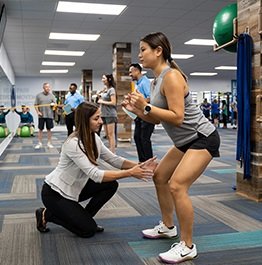
How to Prevent Running Shin Splints
January 20, 2015Shin splints are not only a nagging and debilitating injury; they can also be very frustrating to live with. Most runners know a teammate or a friend who has suffered from shin splints or have encountered the injury themselves during training sessions. Shin splints are identified as a dull, achy pain in the front of the lower leg. This pain may be present while running only or may be present after running has concluded.
Shin splints are accountable for 13% of all running injuries and are more common when runners ramp up their running distances or run on harder surfaces such as asphalt.
Try these options to prevent shin splints from keeping you from your favorite running trails and routes:
1. Stretch your calves
Performing a simple calf stretch targeting both the gastrocnemius and soleus muscles will help to maintain normal ankle mobility which will help to reduce overuse of the muscle on the front of your leg that contributes to shin splints.
2. Don’t skip the warm up
Performing a simple calf stretch targeting both the gastrocnemius and soleus muscles will help to maintain normal ankle mobility which will help to reduce overuse of the muscle on the front of your leg that contributes to shin splints.
CLICK HERE for the benefits and an example of a dynamic warm up.
3. Wear proper running shoes
Working out in shoes that are not designed for your sport can cause increased strain to the bone and connective tissue in your lower leg. Don’t mix up basketball, soccer, cross trainer, or running shoes. Also, make sure there is adequate padding and replace shoes as they become worn and no longer supportive.
CLICK HERE for tips on shopping for the perfect running shoe.
4. Consider your running surface
Uneven terrain and asphalt place increased strain on the lower leg. In addition, if you run on the road, try to avoid running the same direction. For example, run your route backwards.
5. Get adequate rest
Make sure to vary your routine, add in some cross training and weight training. Overuse will result in muscle fatigue and place you at increased risk for injury.
Have Pain While Running or a Running Injury?
Reader Interactions
Leave a comment
You must be logged in to post a comment.

